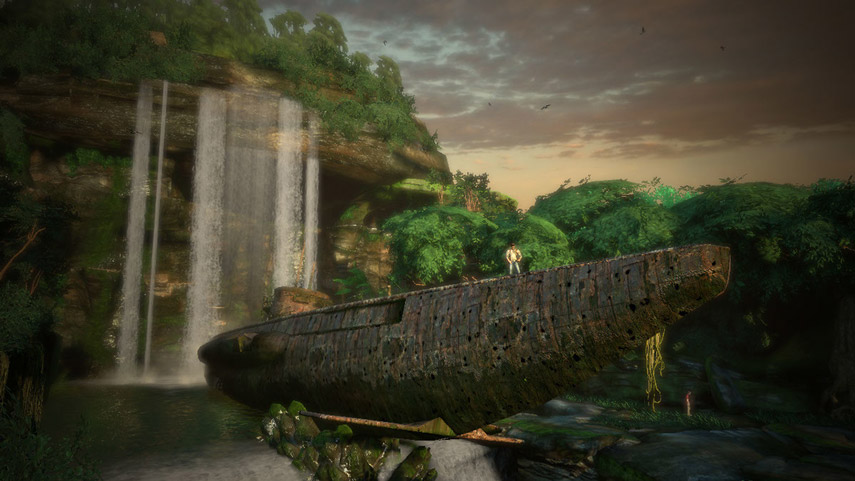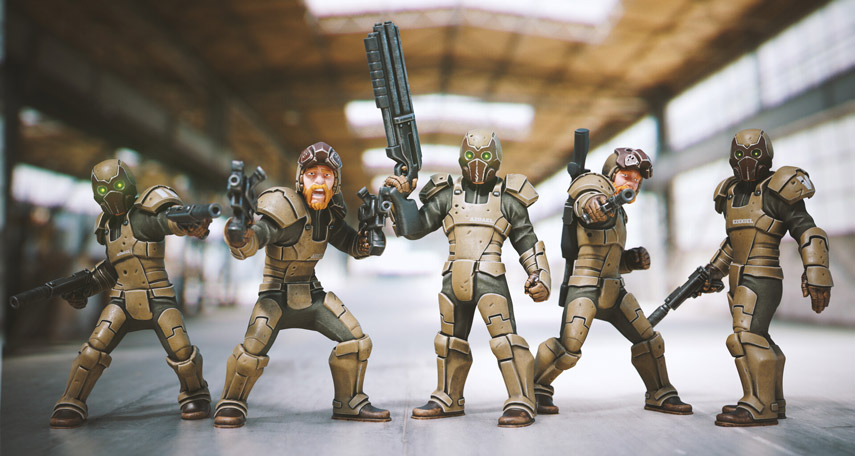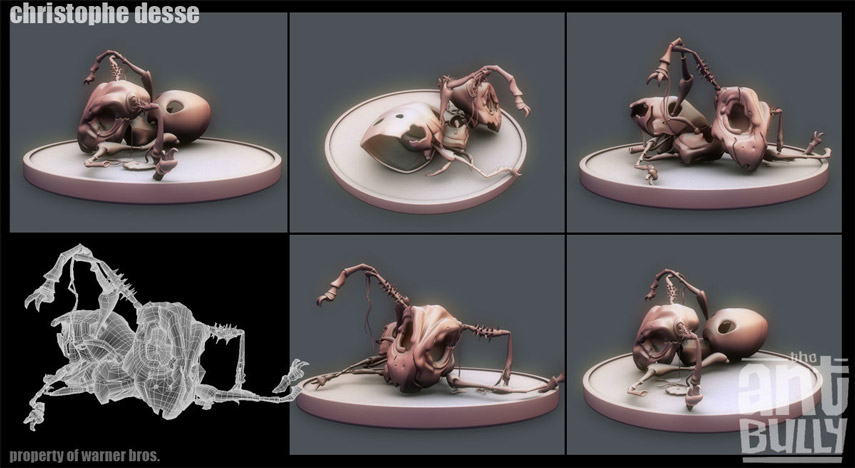Christophe Desse
 Christophe Desse is a sought-after environment and technical artist whose work includes critically acclaimed titles such as the Uncharted series and The Last of Us. Based in Santa Monica, Desse works by day at Naughty Dog delivering high quality content, and by night enjoys creating cartoony and stylized characters and super charged muscle cars. In addition, Desse shares his invaluable experience, precise workflow, and go-to tips and tricks with students at The Gnomon Workshop. To connect with Christophe Desse, check out his Gnomon tutorials, Art Station and website.
Christophe Desse is a sought-after environment and technical artist whose work includes critically acclaimed titles such as the Uncharted series and The Last of Us. Based in Santa Monica, Desse works by day at Naughty Dog delivering high quality content, and by night enjoys creating cartoony and stylized characters and super charged muscle cars. In addition, Desse shares his invaluable experience, precise workflow, and go-to tips and tricks with students at The Gnomon Workshop. To connect with Christophe Desse, check out his Gnomon tutorials, Art Station and website.
GW: How did you hone your crafts in environment art, rendering, texturing and the like? Did one come before the other or did each develop simultaneously?
CD: Great question. Because I started to dabble in 3d at a time when there was no internet or school to learn it, I did have to become an autodidact. My main motivation was not to learn software for the sake of technique or workflow, but just to learn tools that would allow me to create worlds, creatures, and other silly stuff that did—and still—populate my imagination. In addition, at that time one could not access modeling as easily as today. I had to start with learning how to model, and then how to shade and texture, and finally, how to render.

GW: You collaborated projects such as Uncharted and The Last of Us. How easy or difficult did you find the work on these projects?
CD: When I started on the first Uncharted as an environment artist, the creation aspect was relatively easy for me. The previous job I did before joining Naughty Dog was on a 3d movie as a set modeler. Although the modelling was easy to do (since one can cheat quite a lot of details with textures), it quickly became apparent that the process for creating a game was a lot more involved than doing 3d for a movie. Besides creating art, I had to deal with the concept of optimization, memory management and frame rate. Modelling a movie set was fairly straight forward, since I focused on what the camera would see in a given shot. On the other hand, modelling a level for a game required me to model everything that the player can see, explore or walk in, around, or in front of. Plus, nobody can really predict where the player will go. Those are a lot of the kinds of things that are not that much of a problem when it comes to offline rendering.
Looking back to the heydays of Uncharted 1, it is quite jaw-dropping to see how our games have evolved, not only from an artistic stand point, but also the amount of technical stuff that is happening to ensure the level of fidelity we achieve today, especially when it comes to the work. Now, on a day-to-day basis, I mostly do real time destruction, physics vegetation, clothes, and other advanced systems.

GW: You enjoy model kit design and character creation set in various genres, from muscle cars grounded in reality, to humorous fictional cartoons, plus, aliens and science fiction. What are the key differences to your approach in each and what draws you toward these particular genres?
CD: Well, in reality, my approach is often the same because the ground work is all very similar. There is no real difference because they all start as a doodle in 3d, and if they survive the process of getting iterated on without boring me, then they get promoted to final pieces that end up in my portfolio. I think that for one piece that I finish, I am probably starting ten others that end up in the void that is my hard drive. I can’t say that I have really specific sources of inspiration. I think that I draw all of those ideas based on the stuff I enjoyed as a kid and as a teen in the early 80’s in France. I got exposed to a lot of different cool stuff back in those days in France. We did not only get the American franchise as entertainment, but also cartoon channels that showed all the cool stuff from Japan, including children’s animation, violence, and other mature content.

GW: In addition to working with various clients in entertainment, you teach at Gnomon. What stands out to you about your time teaching at Gnomon?
CD: I teach at Gnomon every Thursday night and it has been a great experience. The students are highly motivated and display a great deal of raw talent. I love the fact that they challenge me with questions that I might not have answer to in that specific moment. It forces me to stay on top of my game and come up with ideas on the spot to solve their specific problems. Since every student tends to work in a different way, it also forces me to keep my analyzing and debugging skills sharp to be able to understand their issues and to come up with a satisfactory solution. Furthermore, I find Gnomon students among the more capable students I have taught. They are very quick learners and able to understand a lot at once. I often only show them the path, and then they walk it all by themselves.

GW: What are the current technical roadblocks or challenges present in the industry today and what do you hope will come about with breakthroughs in future tech?
CD: On the one hand, I think that the buy out of the three main 3d software suites by the same company over the last 20 years has impacted innovation through competition in the space. Today’s workflow tends to be fragmented and the user needs to rely on multiple tools and plugins to achieve something that should be doable in the main package. But then on the other hand, I am very excited for tools like substance painter or the redshift renderer. Being able to texture an object in the fraction of the time it used to take and to render it on the GPU at a blazing fast speed makes me feel like not all hopes are lost for innovation. And finally, I also think that with the release of blender 2.8 we might be on the verge of an industry wide paradigm shift. A lot of my peers started to adopt blender for their personal work at home, and I would not be surprised if we start to see its uses creep more and more into big productions’ pipelines.

GW: How do you find motivation when inspiration seems to be sparse? Or how do you break through those seemingly unbreakable “creative-brick-walls?”
CD: I very rarely experience creative block because my mind is always racing with new ideas or with workflows that I want to try and explore. As a matter of fact, I have too many ideas and end up starting many projects that I never finish. It feels like the next big thing is already here and trying to come into this world.
On the motivation aspect, it is fairly easy for me to regain motivation. I just need to be put into a situation where I can’t be doing my personal work, such as long hours at work, vacation, or other situations where I do not have access to my own work station. And then after a couples of days, I start to get moody, cranky and easily upset if I can’t try to bring those new ideas into a new project of mine.
GW: Christophe, huge thanks for sharing your experiences!
CD: Thanks for the questions, Genese, and thank you for the opportunity to share my thoughts!
| Check out Introduction to Substance Painter 2018, Zero to Hero in 3 hours with Christophe Desse |





